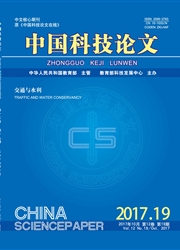

 中文摘要:
中文摘要:
The purpose of this study is to evaluate the in vivo retention capabilities of poloxamer-based in situ hydrogels for vaginal application with nonoxinol-9 as the model drug. Two in situ hydrogel formulations, which contained 18% poloxamer 407 plus 1% poloxamer 188(GEL1, relative hydrophobic)or 6% poloxamer 188(GEL2, relative hydrophilic), were compared with respect to the rheological properties, in vitro hydrogel erosion and drug release. The vaginal retention capabilities of these hydrogel formulations were further determined in two small animal models, including drug quantitation of vaginal rinsing fluid in mice and isotope tracing with99 m Tc in rats. The two formulations exhibited similar phase transition temperatures ranging from 27 to 32 1C. Increasing the content of poloxamer 188 resulted in higher rheological moduli under body temperature, but slightly accelerated hydrogel erosion and drug release. When compared in vivo, GEL1 was eliminated significantly slower in rat vagina than GEL2,while the vaginal retention of these two hydrogel formulations behaved similarly in mice. In conclusion,increases in the hydrophilic content of formulations led to faster hydrogel erosion, drug release andintravaginal elimination. Rats appear to be a better animal model than mice to evaluate the in situ hydrogel for vaginal application.
 英文摘要:
英文摘要:
The purpose of this study is to evaluate the in vivo retention capabilities of poloxamer-based in situ hydrogels for vaginal application with nonoxinol-9 as the model drug. Two in situ hydrogel formulations, which contained 18% poloxamer 407 plus 1% poloxamer 188 (GEL1, relative hydrophobic) or 6% poloxamer 188 (GEL2, relative hydrophilic), were compared with respect to the rheological properties, in vitro hydrogel erosion and drug release. The vaginal retention capabilities of these hydrogel formulations were further determined in two small animal models, including drug quantitation of vaginal rinsing fluid in mice and isotope tracing with 99mTc in rats. The two formulations exhibited similar phase transition temperatures ranging from 27 to 32?°C. Increasing the content of poloxamer 188 resulted in higher rheological moduli under body temperature, but slightly accelerated hydrogel erosion and drug release. When compared in vivo, GEL1 was eliminated significantly slower in rat vagina than GEL2, while the vaginal retention of these two hydrogel formulations behaved similarly in mice. In conclusion, increases in the hydrophilic content of formulations led to faster hydrogel erosion, drug release and intravaginal elimination. Rats appear to be a better animal model than mice to evaluate the in situ hydrogel for vaginal application.
 同期刊论文项目
同期刊论文项目
 同项目期刊论文
同项目期刊论文
 期刊信息
期刊信息
